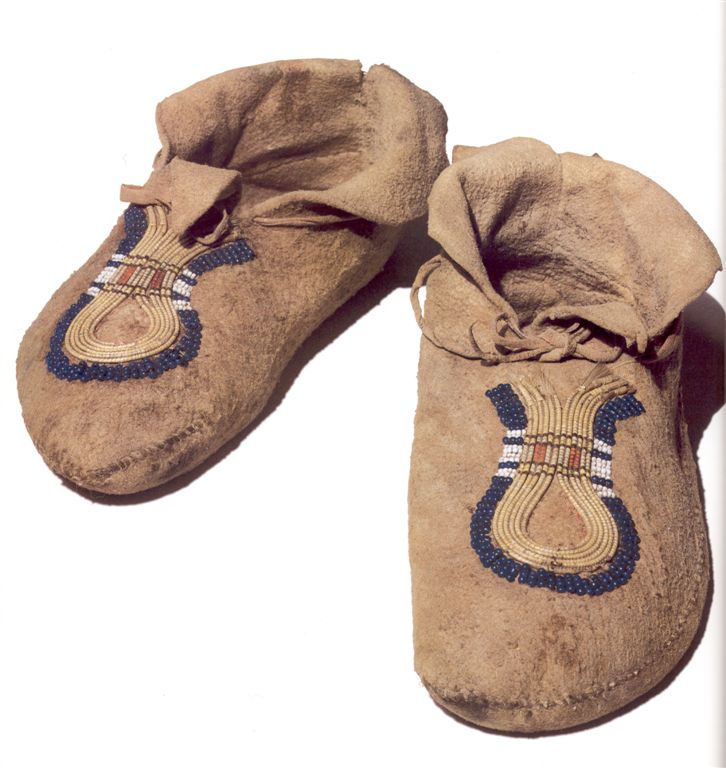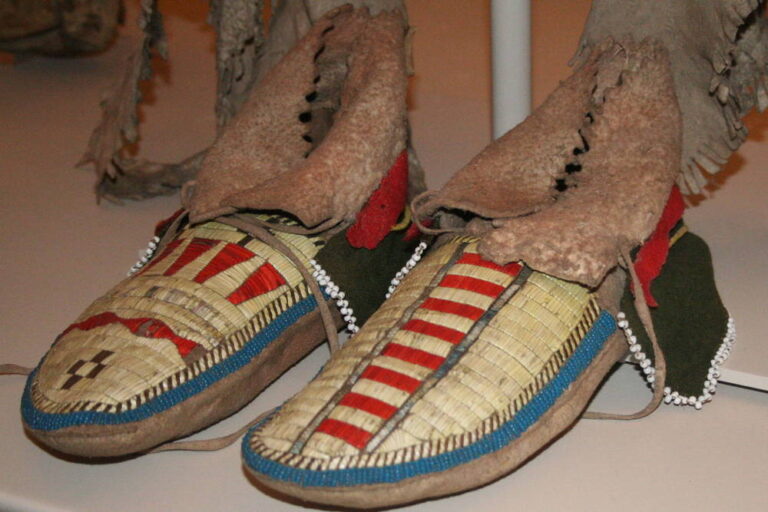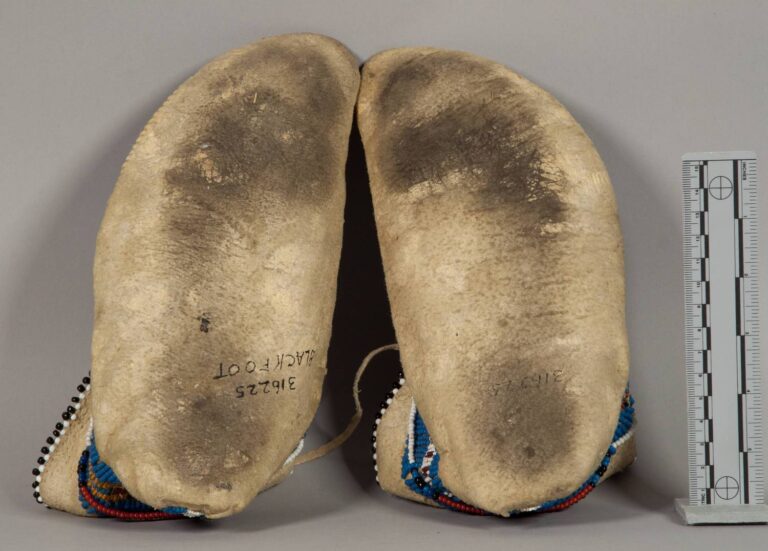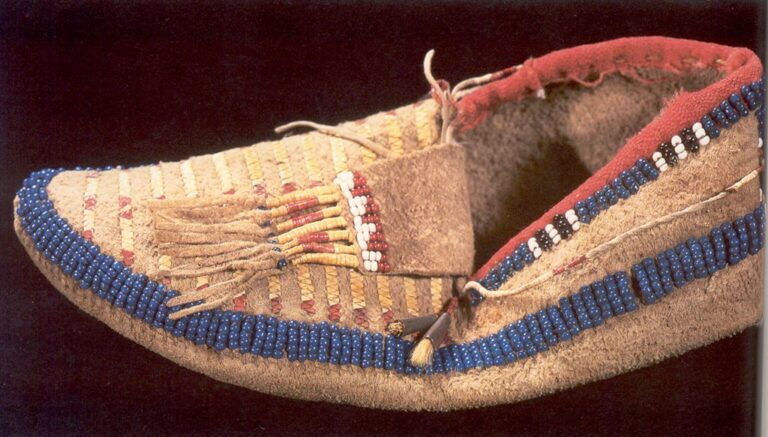Origin, period and area of distribution
Side seam moccasins are the oldest known type of moccasins from the Great plains. Geographically speaking, moccasins of this style were certainly worn in the western parts of the Northern and Central Great Plains. The tribes of the Crows, Blackfeet, Lakota, Shoshone, Flathead, Assiniboin, Cheyenne, Mandan, Hiadatsa and most tribes from the Plateau area certainly used them.
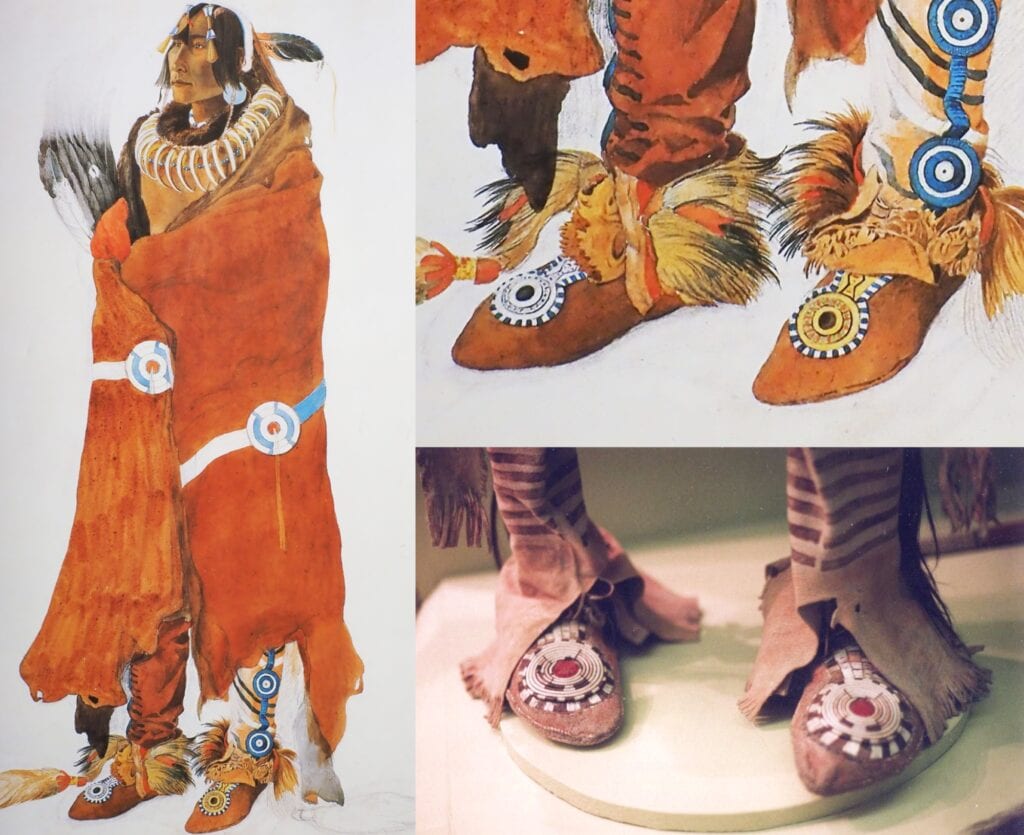
According to some theories, use of side seam moccasins spread to the Great plains from the Plateau area. They preceded the period of the two piece-hard sole moccasins. During the first half and beginning of the second half of the 19th century (but very likely even earlier), side seam moccasins were the only type of shoes worn by the mentioned tribes. During the 1860s they slowly began to fade out of fashion and were gradually replaced by the more modern two piece-hard sole moccasins.
Construction
Side seam moccasins have quite a simple construction. Each moccasin consists of a single piece of leather, usually very strong and resilient (in most cases buffalo). The design can be seen in the picture. First, the moccasins were stitched up only on the sides. Then they were turned over and the heel seam was sewn together too. The overhanging leather on the heel could then be folded and stitched up or cut into the desired shape (see picture). The way the remaining leather on the heel was processed usually characterized the tribe.
The shoe tongue would either be a direct component of the pattern, or an extra piece of leather was sewn on. Most tongues had a triangular, rectangular or trapezoidal shape. The last part of each moccasin was the shoe lace, usually an ordinary buckskin strap.
Quality
Side seam moccasins are very easy to make, comfortable and usually a perfect fit. Their biggest disadvantage is the soft sole – you literally feel each and every single stone on the ground. They do not last very long either and wear out after some time. That is why the Indians sometimes stitched an additional piece of rawhide to the sole.
More commonly, they threw away their worn-out moccasins and made themselves a new pair. Side seam moccasins were therefore considered consumer goods. The lifetime of such shoes was about several days. When warriors set off for a war party, they took a few spare pairs with them.
Captains Meriwether Lewis and William Clark, whose men also wore side seam moccasins, noted in their diaries that in bad terrain a man wore out one pair of moccasins in three days, while in favourable conditions they could last for as long as ten days.
Trade
Many white men who lived in the areas of the Central and Northern Great Plains, especially trappers and mountainmen, also regularly wore side seam moccasins. The mountainmen bought moccasins from the Native Americans in large quantities, often taking hundreds of pairs for bigger hunting expeditions.
As a common practise, Indian women would only stitch up the side seam and left the heel open. Every hunter had a different foot size. White hunters could subsequently sew the heels up while wearing their moccasins, thus ensuring an accurate fit.
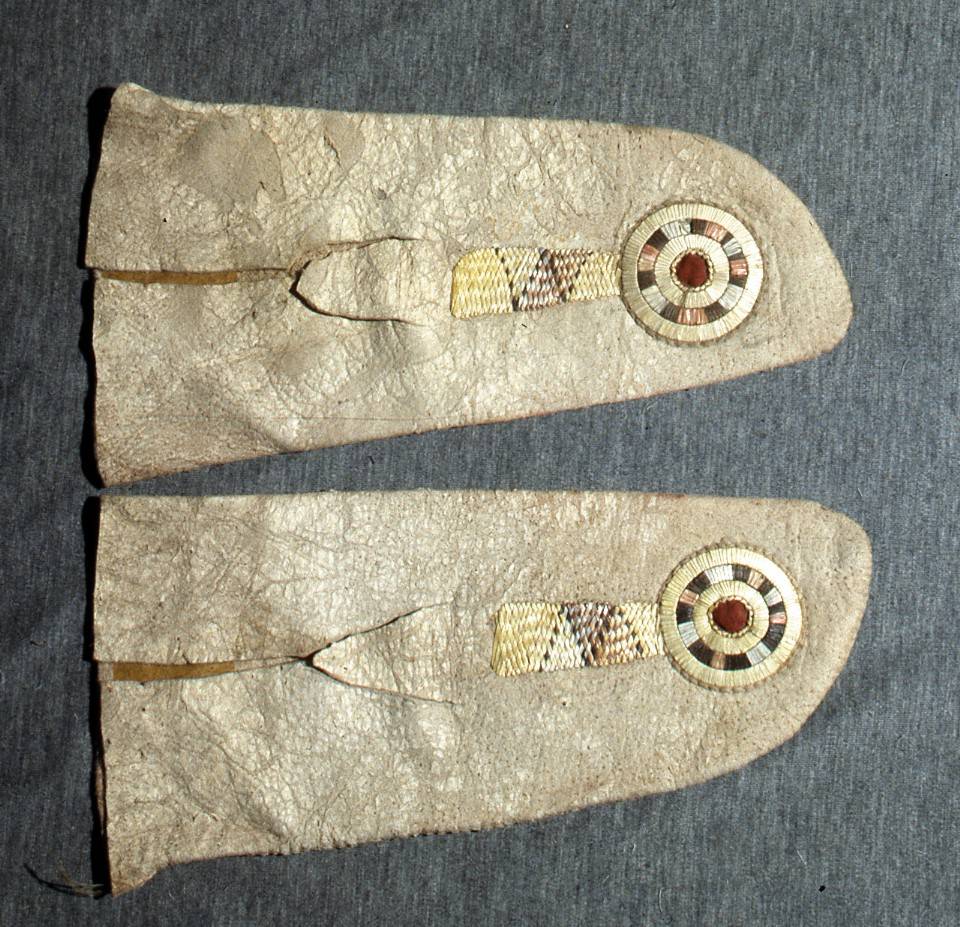
Decoration
Some side seam moccasins were beautifully decorated. Their owners saved such a pair especially for festive occasions. Decorated moccasins could also be used as gift or trade goods between tribes.
Decoration was dependent on the specific tribe or cultural area, and also the taste of this or that artist (decorators were always women).
A lane stitch of beadwork above the side seam was a very common type of decoration. The part on the instep was very often decorated as well. The whole or just a part of it could be embroidered. The so-called “key hole” motif – a rosette with adjacent trapezoid – was an especially common way to decorate the instep. Another type of decoration was made by lines running transverse to the instep. These might be created out of a rows of beads or porcupine quills.
In most cases pony beads were used, although some examples show the first use of seed beads, too.
Winter side seam moccasins
Winter moccasins copied a similar design to that of their summer cousins, the difference being in the use of material – fur instead of leather (mostly buffalo). The pattern size had to be a bit larger, because buffalo hair took up additional space. These moccasins were always stitched up with the hair on the inside.


